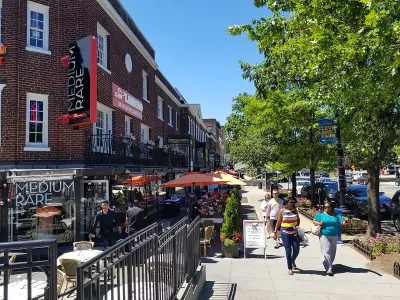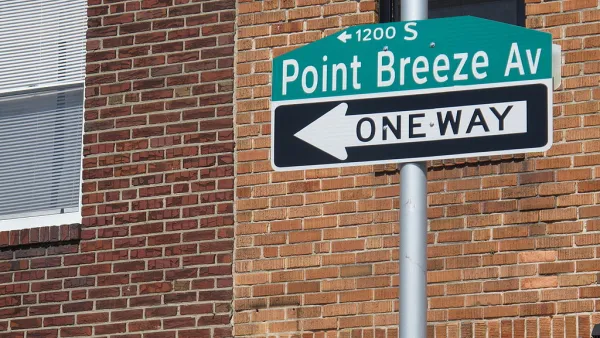How one historic district in a growing corner of Washington, D.C. is able to effect downzoning.

Nick Sementelli, Alex Baca, and Michael Whelan introduce a case study in development opposition in Washington, D.C. with the following:
When ANC 3C passed a resolution this year in support of more density along Connecticut Avenue in Cleveland Park, it was a significant moment. The neighborhood is a textbook example of a wealthy area that has preserved its exclusivity through low-density zoning, which largely makes illegal anything but single-family homes—especially on residential streets.
According to the article, the neighborhood has been growing while adding nearly no new housing, "let alone subsidized or income-restricted affordable housing."
The neighborhood is one targeted by proposed amendments to the district's Comprehensive Plan—the specific change proposed for Cleveland Park would allowed increased density with discretionary approval.
The key to this case study, however, is the additional hurdle facing potential developments in Cleveland Park.
Even after navigating the zoning process to appeal for a higher-density allowance, new projects will still have to conform to the limitations of the neighborhood’s historic district, which, in addition to its goal of preserving history, was designed specifically to limit that exact kind of density.
According to the article, the Cleveland Park Historic District has a track record of achieving downzonings for developments relative to the zoned capacity for development in the neighborhood. The example offered by the article is the Macklin, which sought to add an additional building to an existing 17-unit apartment building located two blocks from the Cleveland Park Metro station.
In the process of winning approvals, the historic district achieved three rounds of cuts from the developers original proposal for the property—for "custom zoning" (which cut 27 units from the building), a "pre-emptive concession" (which raised the number of cut units to 41), and a final cut by the district's board (for a total of 42 units cut from the project). All of this was achieved, according to the article despite the fact that "Ostensibly, historic designation in DC is supposed to have nothing to do with the land use regulations of a property." The source article includes the key details about how the building arrived to its final tally of 34 new housing units.
FULL STORY: How Cleveland Park’s historic district cost the neighborhood 42 homes in one project

National Parks Layoffs Will Cause Communities to Lose Billions
Thousands of essential park workers were laid off this week, just before the busy spring break season.

Retro-silient?: America’s First “Eco-burb,” The Woodlands Turns 50
A master-planned community north of Houston offers lessons on green infrastructure and resilient design, but falls short of its founder’s lofty affordability and walkability goals.

Delivering for America Plan Will Downgrade Mail Service in at Least 49.5 Percent of Zip Codes
Republican and Democrat lawmakers criticize the plan for its disproportionate negative impact on rural communities.

Test News Post 1
This is a summary

Test News Headline 46
Test for the image on the front page.

Balancing Bombs and Butterflies: How the National Guard Protects a Rare Species
The National Guard at Fort Indiantown Gap uses GIS technology and land management strategies to balance military training with conservation efforts, ensuring the survival of the rare eastern regal fritillary butterfly.
Urban Design for Planners 1: Software Tools
This six-course series explores essential urban design concepts using open source software and equips planners with the tools they need to participate fully in the urban design process.
Planning for Universal Design
Learn the tools for implementing Universal Design in planning regulations.
EMC Planning Group, Inc.
Planetizen
Planetizen
Mpact (formerly Rail~Volution)
Great Falls Development Authority, Inc.
HUDs Office of Policy Development and Research
NYU Wagner Graduate School of Public Service





























